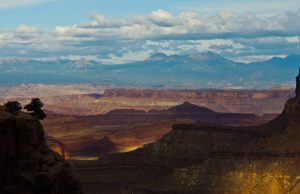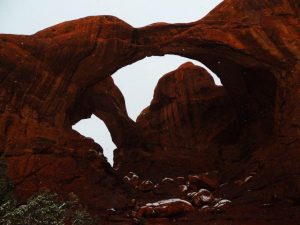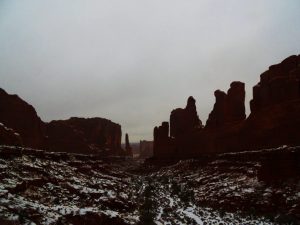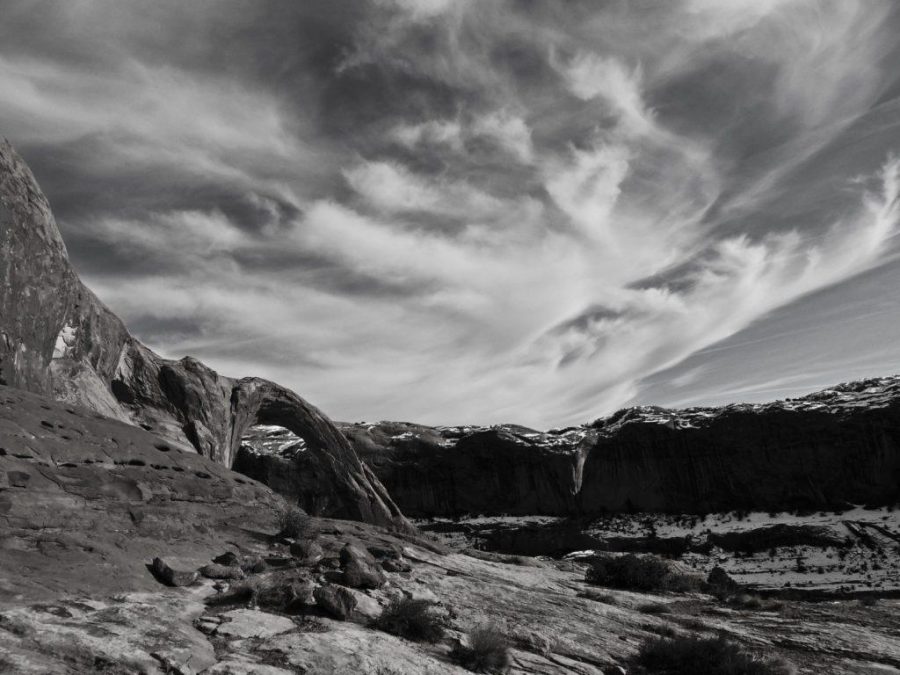An interpersonal connection with nature and the surrounding world has remained fundamental to the human experience for time immemorial. Through sight, sound, and touch, we perceive and interact with this planet. aAll experience, however, is entirely limited to the capabilities of these senses, permitting us only a small glimpse into the mysterious and infinite realm that lies just beyond our reach. So many of the Earth’s constant processes and transformations occur far too slowly and quietly for the unassisted ear to catch, though new advances in technology and artistic vision are changing that, giving voices to the long unheard.

The creative movement to explore the intricate dimensions that slip past human perception has become further enriched by a recent collaboration between University of Utah geologist Jeff Moore and Jacob Kirkegaard, a European sound artist who has devoted his work to ambient, hidden sounds in the environment.
The project was initially inspired by Moore’s research into the imperceptible seismic vibrations of arches in the deserts of the Southwest, beginning when he and his colleagues began to analyze the origins and influences of these waves on arch structure and sustainability. In their 2016 study of southern Utah’s Rainbow Bridge, among the highest natural bridges in the world, they discovered the constant influence of seismic sources as close as nearby vehicles and as far away as small earthquakes in Oklahoma. Moore came to understand these structures not as fixed objects that change independently, but rather as “transient landforms sculpted by erosion and inching nearer to collapse every day,” he said. Moore found that “We as humans aren’t equipped with the senses to experience these subtle movements.”
The geologist’s hyper-concentrated recordings of seismic waves and vibrations within the red rock arches of Southern Utah and Arizona brought him to recognize a mysterious agency in these structures in addition to just how intimately receptive they are to the surrounding environment. What began as a scientific project in the structural sustainability of these arches developed into a profound shift in how they are to be perceived and understood.

“These movements are happening every second of every day, but are too small to see or feel,” Moore said, “Hearing the natural hum of these arches I feel gives them a voice, a real voice where they call out things like their state of health and response to all manner of forces.”
The vibrant synthesis between scientific and creative came when Moore reached out to Kirkegaard after learning of the artist’s previous works and dream “to one day be able to record the deep vibrations of the Earth.” The artist’s sound can be described as avant-garde and ambient, ranging in compositions derived from recordings of molten lava, drifting ice, and the operation of nuclear power plants, to his single, “Labyrynthitis,” consisting of recordings from inside his inner ear. Manipulating the understated and nuanced movements of red rock arches into music struck Moore as something for which Kirkegaard was extremely well-suited.
Over the course of the more temperate months of 2017, Kirkegaard traveled with Moore’s team through Southern Utah and Arizona, painstakingly recording the sounds of the desert landscape surrounding these arches, including winds, waterways, and the musings of wild animals. These real-time nature recordings were later synchronized with Moore’s seismic waves and vibrations sped up to audible frequencies, ultimately resulting in an art piece as intimate as it is profound.

The refined product of this explorative undertaking, “Transmission”, was presented by Kirkegaard at an installation at Dartmouth College’s Hood Museum last year from September to December. The atrium was outfitted with large speakers at the polar top and bottom of the concrete room, where the seismic humming of the arches from below resonated through the active recordings compiled on the surface.
“Transmission” tangibly conveys the intimate connection between these mysterious objects and the temporal progression around them with quiet elegance, allowing the previously obscured voices of the desert’s ancient structures a platform for expression. Moore reflects that his collaboration with Kirkegaard allowed him to “focus on trying to communicate the ‘hidden voice’ of the arches and what they are saying, which our data uniquely allow us to decipher.” This profound synthesis between the scientific and creative can be experienced at fonik.dk/works/transmission.html. Stop, listen, and learn.


